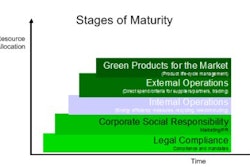Nearly 60 percent of all corporate Six Sigma initiatives fail to yield the desired results, according to Praveen Gupta, a noted author on the methodology and Master Six Sigma Black Belt who has been involved with Six Sigma since its origin in the 1980s. There is rising concern across multiple industry sectors regarding the failure of many internally led 6s/lean projects, so much so that we must explore why so many initiatives do not reach their desired results, as well as ways to supplement Six Sigma to improve its likelihood of success.
Since former GE CEO Jack Welch popularized Six Sigma in the late 1990s, it has profoundly impacted the corporate world. However, more corporations are now pulling back on their Six Sigma initiatives, realizing that the Six Sigma methodology by itself is not the cure-all for corporate ills. Former Home Depot CEO Robert Nardelli was ousted as his strict focus on Six Sigma negatively affected worker morale and consumer sentiment, forcing Home Depot from a top spot amongst major retailers to the bottom of the American Customer Satisfaction Index rankings in 2005. While profitability at Home Deport soared, the stock price plummeted.
3M also struggled with Six Sigma. Implemented under CEO James McNerney, a former GE executive who joined 3M after failing to secure Jack Welch's CEO position, Six Sigma seemed promising. Profits initially grew approximately 22 percnt a year, but then languished. Experts questioned whether McNerney's unyielding emphasis on efficiency stifled 3M's creativity and innovation.
Examples like Home Depot and 3M show that companies cannot focus on implementing Six Sigma in isolation. Clearly, Six Sigma is a set of process tools that should only be part of a more holistic process improvement strategy. Equal attention must be paid to people, innovation and customer relationships.
We often note a behavior change gap within companies that devote significant resources to the Six Sigma or lean philosophies. The talented experts driving these types of initiatives generally are extremely successful at developing technical changes that positively impact company performance. Their focus tends to be robust in statistical analysis and in addressing specific parts of the process. Much less specific and robust, however, is their approach to the workers upon whom the mine or company depends.
When an organization decides to make any significant change to its internal processes, just the initial talk of the intended change can be unsettling to a workforce comfortable in its current routine. The situation is exacerbated if management fails to communicate its reasons for wanting to implement the change and fails to demonstrate strong, visible support for it. Thus, at Six Sigma companies or sites, a sizable gap may exist — process improvements may be designed perfectly to reach their objectives, however the workforce may not be prepared to accept them as part of their daily routines.
Experiences in the field indicate that most managers come up short in their approach to the behavioral elements of change. For example, while it might be clear what type of change in a mining operation is needed to enhance throughput, the results of that change hinge on whether behavior is modified permanently, rather than on whether the change has precisely incorporated the technical requirements.
Many times the very aspects that make Six Sigma powerful can reduce its overall effectiveness. It uses rigorous statistical analysis to produce data to identify defect areas, the correction of which produces better quality, lower costs and increased efficiency. While very effective at controlling processes, it is those elements that are harder to control, such as employee behavior and innovation/ideation, which can hinder its long-term success.
Implementing the Six Sigma methodology can still be a very successful approach to process improvement. Many companies that have implemented Six Sigma have seen their product quality improve, their costs decline and their efficiency level increase, directly impacting bottom-line profitability. However, many times this success becomes a short-term phenomenon because companies fail to sufficiently incorporate all factors that impact the long-term sustainability of those improvements.
A behavior-focused approach makes change sustainable. It helps the workers change the way they feel and think about their jobs by aligning attitudes and behaviors with the system and process changes, as well as with the overall direction of the company. Further, it keeps us ever aware that a technically-sound change designed by Six Sigma, lean or similar applications could be at risk of failing unless supported by the appropriate behavioral change.









